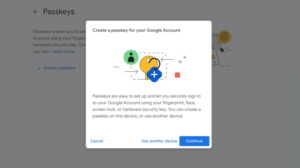As a CIO, data is at the core of everything you do. For others, though, data may be seen as insignificant and tricky to understand. You understand data’s inherent value— it’s time your team does, too. A data-focused workplace culture will demystify the world of metric tracking, foster a sense of both collaboration and independence within your team, and identify areas for improvement and growth. Creating a data-centered culture doesn’t have to be difficult. Here are a few simple ways you can bring data to the forefront of your organization.
Evangelize
Every business operation, no matter how insignificant it may seem, can be integral to the vitality and efficiency of an organization. Even the smallest practice can be tracked, analyzed, and improved. All of it has a measurable effect, and all of it is worth attention. You may not have use for the data right now, but you may be surprised when it comes in handy in the future.
To create a data-centered workplace culture, however, you’ll need to take this mindset team-wide or— better yet— company-wide. Share the responsibility of data collection and analysis with all team members at all levels. Teach them the ways they can identify the components of— and track progress in— their ongoing and strategic assignments. When everyone plays a role in the process, they’ll become more comfortable with data, see how they can learn from it, and, at the very least, become more aware of its organizational importance.
Establish Key Metrics
The numbers alone aren’t enough. Data means nothing unless a company knows how to use it. When looking at recent data measurements, determine which are the most important for your businesses’ goals (both short-term and long-term). Do you want to increase revenue? Should you target customer satisfaction? Is it in your best interest to speed up process time?
Each organization is different, of course, and should narrow its focus differently. Be careful when choosing your KPIs. The data that’s most valuable for one company may not be valuable at all for yours. The data your organization tends to focus on may not be the best, either— avoid the ease of “business as usual” and, if appropriate, seek out the unexpected. It’s likely you’ll encounter problems you didn’t know existed.

Emphasize Your KPIs
Choosing your KPIs is only the beginning. Once you’ve selected your most important indicators, make sure your team knows what they are and, more importantly, how they’ll be used to improve a particular aspect of the business.
Tell your team what you’ll be tracking, how you’ll be tracking it, and why you’ve chosen to pursue this particular data. If you’ve chosen to monitor ROI, for instance, share how the underlying data was sourced, how the metric was calculated, and what the numbers reveal about the current situation. This will enable identification of trends and what should be stopped, started or continued for improved growth.
Your organization’s KPIs are a valuable form of communication— treat them as such. Regularity is key. At every staff meeting, begin by presenting and analyzing the latest data on your KPIs. Whenever possible, do so in a way that is most accessible for all team members. Instead of raw data, present your findings in visual mediums like graphs and charts.
This multimodal technique will ensure that everyone, especially those who don’t rely on data, has a well-rounded understanding of the data’s significance. Be sure to encourage dialogue and provide clarification as needed. These metrics might be second-nature to you, but they could be completely foreign to someone else.
Data First, Opinions Second
A culture of data is so much more than one that emphasizes metrics— it’s a culture that upholds its continued significance.
A data-focused culture is impossible to achieve unless the measurements you take have a critical role in your organization’s long-term trajectory. What’s the best way to show your team the role of data? Lead by example. Use any and every applicable piece of data to drive the decision-making process. When making a choice, make a point to maintain objectivity and let the numbers be your guide. Show your team that the information they’ve collected is valuable, that their findings can influence the trajectory of the company as a whole. If they see their efforts being put to good use, they’ll be energized to continue their exploration of data in the future.











